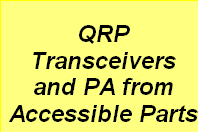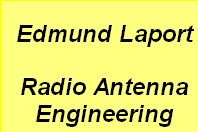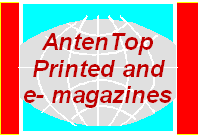

Antentop is FREE e-magazine devoted to Antennas and Amateur Radio an
Special page devoted to
Crystal Sets to Sideband

Custom Search
|
ANTENTOP-
02- 2004, # 006
|
Crystal
Sets to Sideband
|
|
|
|
||
Chapter 5 GETTING ON THE AIR
- DECIDING WHAT TO DO FIRST
Chapter 6 BUILDING A QRP HOMEBREW
-"Dead Bug" and "Gouged Board" construction
-Superglue "Island Boards" -Coax jumpers -Shielded boxes
-Transistor amplifiers and oscillators |
-How an amplifier becomes an oscillator -Class A and Class C amplifiers -Stabilizing the operating point, bypass caps and emitter
resistors -Quartz crystals- the key to frequency stability -The 40 meter QRP circuit -Oscillator and buffer -Inductors, RF transformers and impedance matching -Tapped toroid inductors -How to wind them (and mistakes you might make) -The final amplifier stages for the QRP -Tuned versus broadband - Use both for best results
-Bifilar wound, broadband transformers -How to wind them (and how you might screw up) -Ferrite bead RF chokes, expensive RF power transistors,
heat sinks & output connectors -Conquering inductors -Calculating resonance -Calibrating trimmer capacitors -Calculating turns on powdered iron and ferrite toroids
-Chebyshev output low pass filters -Keying your QRP -MOSFET power transistors - A "spot switch" for the QRP Chapter 7 BUILDING A CODE PRACTICE
RECEIVER
Chapter 8 POWER SUPPLIES
|
|
|
Page 75 |
||
 |
 |
 |
 |
Just for Fun:

Powered byIP2Location.com
Thanks for your time!
Last Updated:
February 23, 2020 20:57




